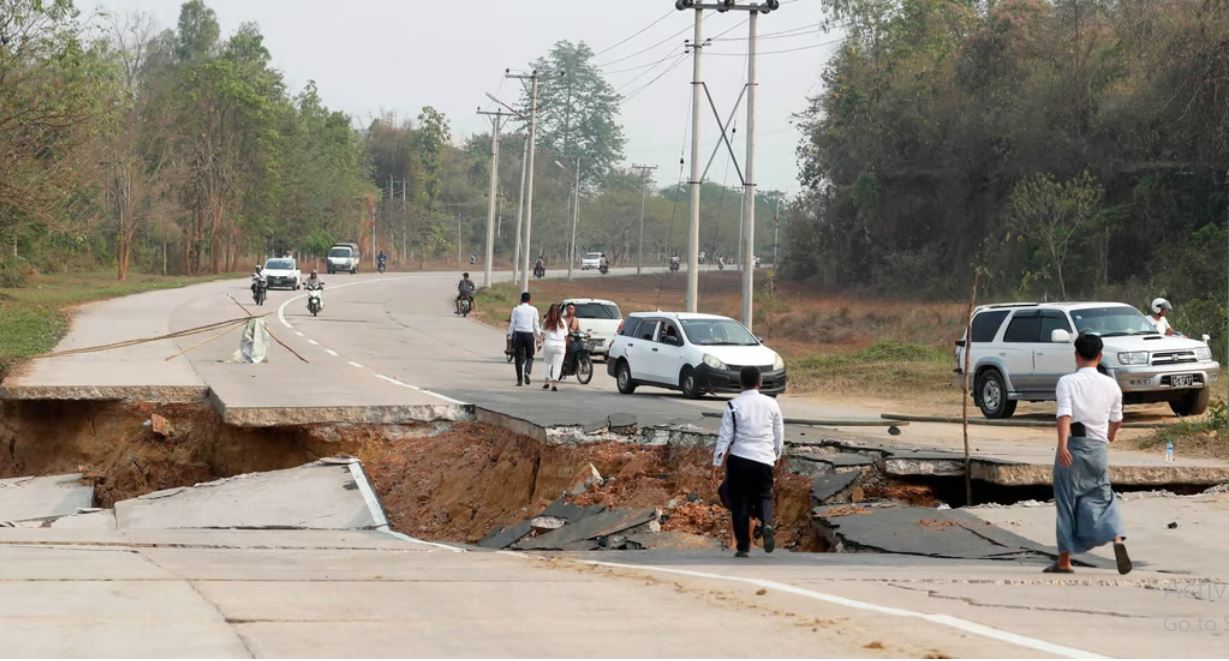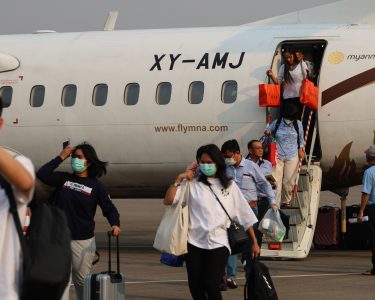Myanmar Investment Review
Karzo, a leading Myanmar-based logistics platform, has called on businesses to step up their role in addressing critical supply chain gaps following the 7.7 magnitude earthquake that disrupted major transport corridors in the Mandalay and Sagaing regions. During a recent logistics briefing hosted by the British Chamber of Commerce Myanmar, Karzo executives outlined the urgent need for business-led resilience strategies to stabilize operations and support national recovery.
Earthquake Fallout Disrupts Key Transport Corridors
The collapse of critical infrastructure—such as the Innwa and Sagaing bridges—has severely impacted road connectivity between Yangon and the northern and central regions. Freight movements now rely on alternate routes and ferry crossings, significantly extending lead times. Some shipments to Myitkyina are facing delays of up to one month, while crossings at the Ayeyawaddy River require a three to five-day wait.
Routes to Myawaddy and Monywa remain compromised, with the Asia Highway closed due to conflict and road capacity strained by high demand for 22-wheelers. These delays have triggered sharp cost increases and raised concerns across commercial and humanitarian sectors.
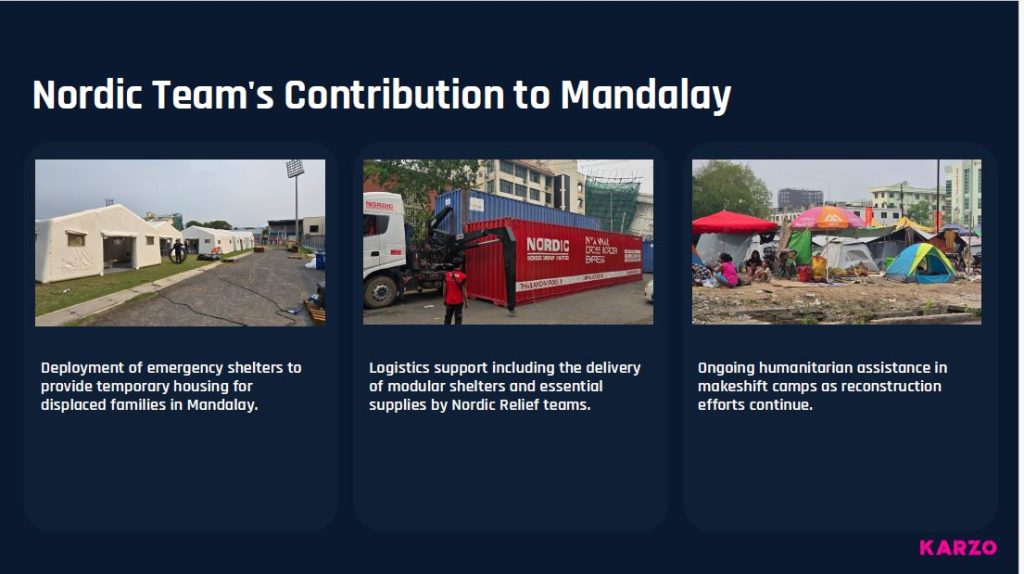
Rising Demand and Elevated Costs
In the weeks following the earthquake and the Thingyan holiday, supply chains shifted rapidly to accommodate disaster relief, including essentials such as food, water, shelter materials, and mobile toilets. This was followed by surging demand for construction supplies and agricultural goods as rebuilding efforts began.
Transport prices have soared. The Yangon–Monywa corridor saw a 66.7% year-on-year increase, while routes between Mandalay and outlying regions have faced similar spikes. Limited truck availability, a lack of return cargo, and growing fuel and labor costs are contributing to sustained upward pressure on logistics expenses.
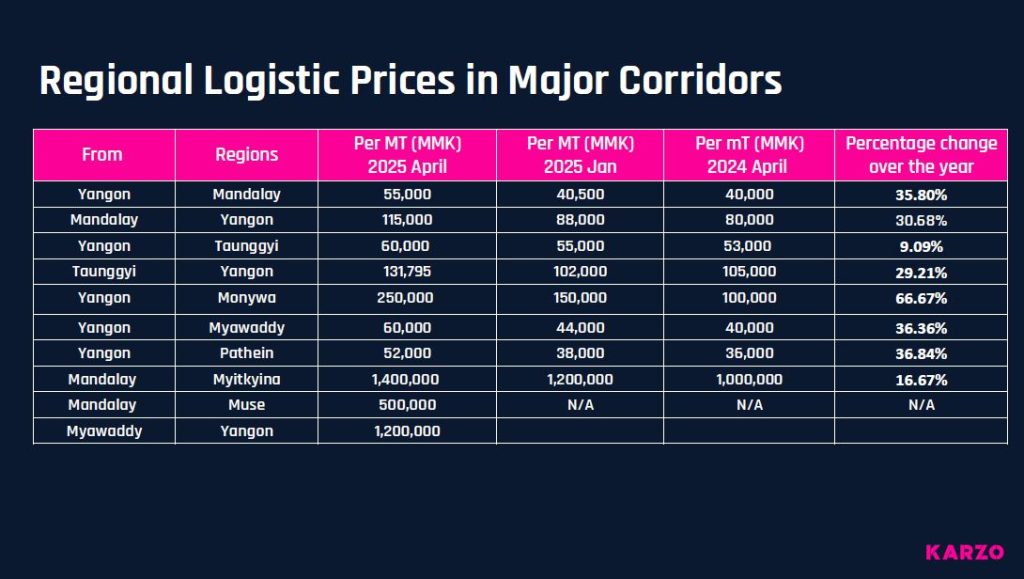
Operational Constraints and Regulatory Complexity
Myanmar’s existing logistics framework—still largely dependent on manual processes and paper-based systems—has struggled to keep pace with current demands. Digital tools remain underutilized, complicating coordination and reducing transparency.
Regulatory issues continue to pose barriers. While no major changes have been made to commercial import requirements, humanitarian cargo still faces a case-by-case approval process, with exemptions requiring embassy support. Internet outages following the quake further delayed documentation and clearance procedures.
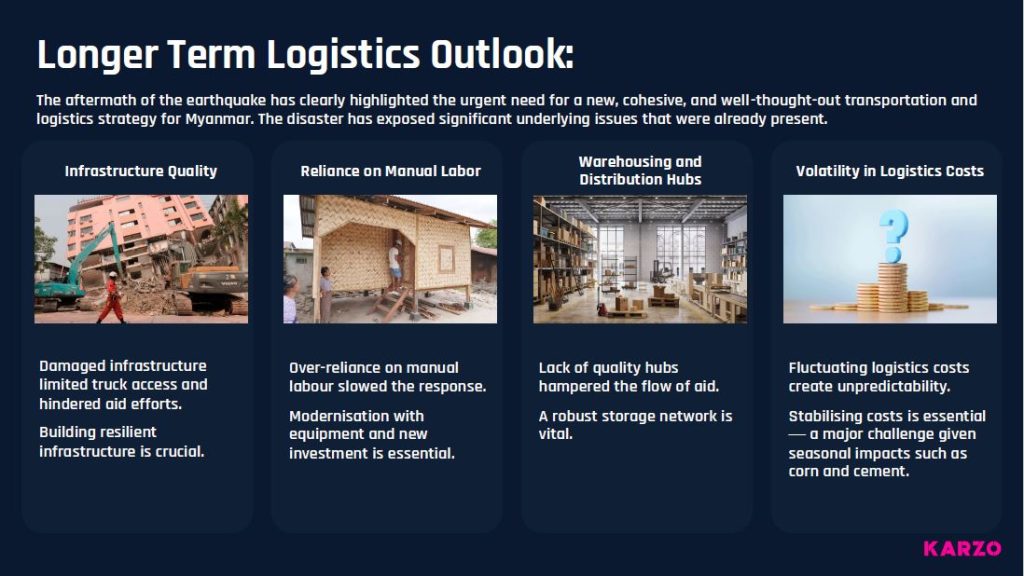
Strategic Gaps and the Case for Private Sector Leadership
The disaster has exposed underlying structural weaknesses: fragmented national strategies, outdated infrastructure, limited warehousing, and costly vehicle imports that constrain fleet renewal. Industry participants at the briefing argued that these issues can no longer be addressed by government alone.
Businesses were encouraged to invest in flexible logistics models such as LTL (Less Than Truckload), expand storage hubs near high-need areas, and accelerate the adoption of automation and tracking technologies. As monsoon season approaches, stabilizing logistics operations will be essential not just for humanitarian support, but for continued commercial activity.
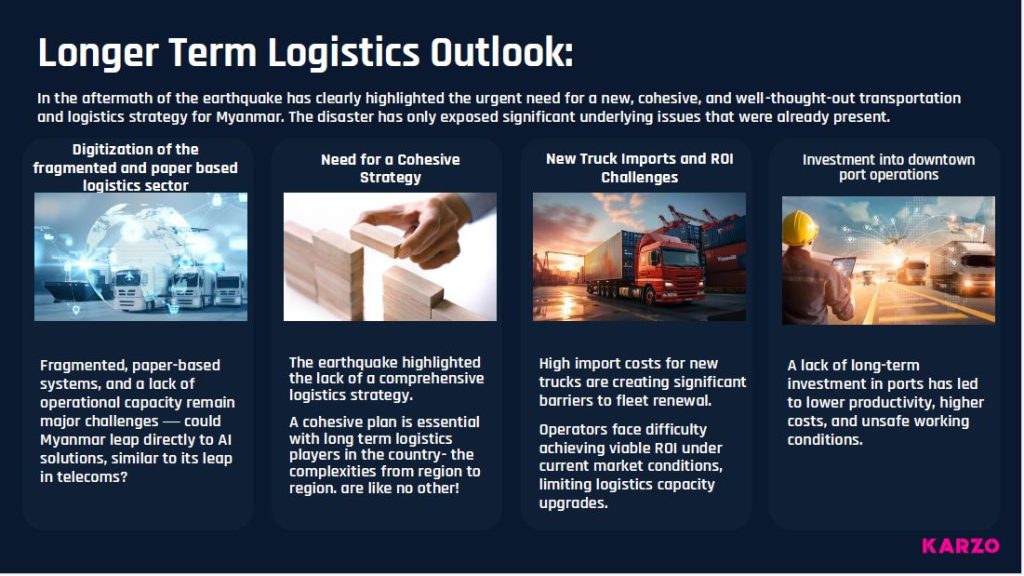
Market Snapshot: Freight Rates Continue to Climb
The briefing shared updated rate comparisons across major corridors, illustrating the scope of disruption:
- Yangon–Monywa: MMK 250,000 per metric ton (up 66.7% YoY)
- Yangon–Mandalay: MMK 55,000 (up 35.8%) *increasing further to MMK 70,000 (as of May 12, 2025)
- Taunggyi–Yangon: MMK 131,795 (up 29.2%)
- Mandalay–Myitkyina: MMK 1.4 million
Given current challenges, these prices are expected to remain elevated. The sector is bracing for additional strain during the rainy season, when road conditions are likely to deteriorate further and demand for shelter materials continues to rise.
While the short-term outlook remains complex, the message from industry stakeholders was clear: businesses that proactively modernize, diversify operations, and invest in scalable logistics strategies will be better positioned to navigate future shocks and contribute meaningfully to Myanmar’s recovery.



